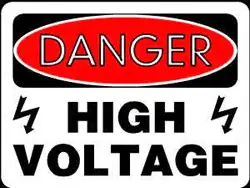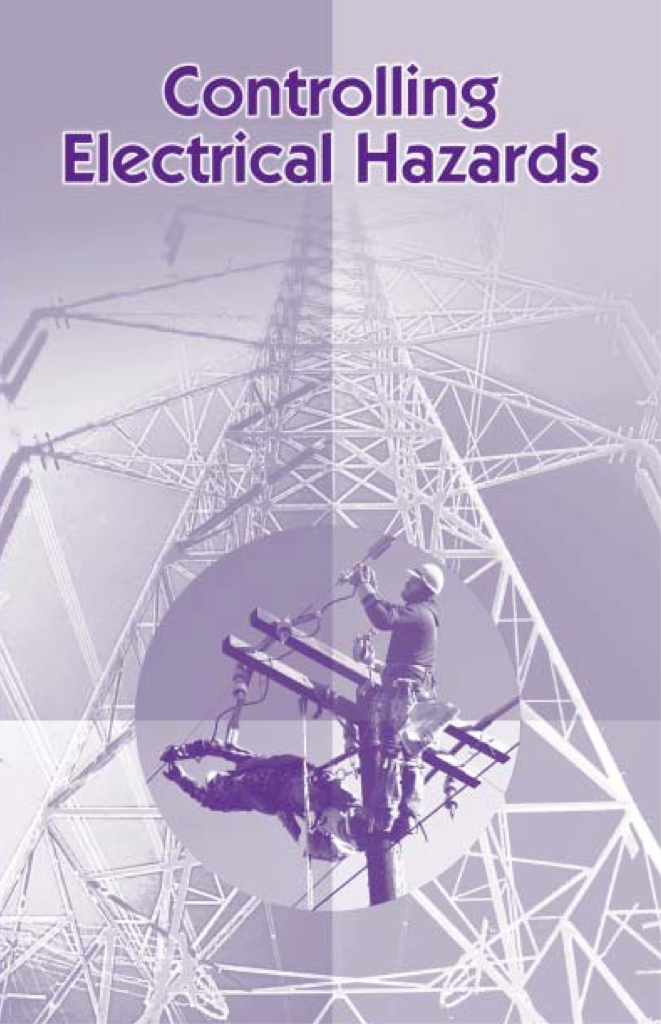Electrical Safety Signs

CSA Z462 Arc Flash Training - Electrical Safety Essentials
Our customized live online or in‑person group training can be delivered to your staff at your location.

- Live Online
- 6 hours Instructor-led
- Group Training Available
Download Our OSHA 3075 Fact Sheet – Understanding Electrical Hazards in the Workplace

- Learn the effects of electric current on the human body
- Understand OSHA safety standards and protective devices
- Discover essential lockout/tagout and grounding practices
Electrical safety signs communicate hazards with standardized symbols, colors, and labels, supporting OSHA and ISO 7010 compliance, arc flash warnings, shock risk alerts, PPE requirements, lockout/tagout, and emergency shutoff identification.
What Are Electrical Safety Signs?
Electrical safety signs standardize symbols marking hazards, PPE, and controls to prevent shock and arc flash.
✅ Use ISO 7010 symbols and ANSI Z535 colors for hazard clarity.
✅ Place at switchgear, MCCs, panels, enclosures, and energized zones.
✅ Include voltage, arc-flash boundary, PPE category, and LOTO steps.
Electrical safety signs are an essential tool for maintaining a safe working environment in industries where hazards are present. These warnings help identify hazards, prevent accidents, inform workers of potential risks, and ensure that proper procedures are followed. Whether cautions about high voltage, arc flash, or other dangers, these serve as a critical reminder of the steps workers need to take to stay safe. Compliance with the regulations that govern the posting of safety signs is not just a matter of policy; it's a matter of protecting lives. For an overview of foundational practices, see electrical safety guidelines that contextualize signage within broader controls.
The Importance of Electrical Safety Signs:
In any workplace dealing with equipment, workers face risks ranging from mild shock to severe injuries like arc flash burns. The role of a sign in preventing these incidents is crucial. Warning labels are designed to inform workers of hidden dangers that may not be immediately apparent but pose significant risks. For example, high-voltage areas or equipment that could lead to arc flash should always be marked with appropriate cautions to ensure workers are properly informed. Industry-specific considerations are detailed in industrial electrical safety resources that help tailor training and signage.
Electricity Today T&D Magazine Subscribe for FREE

- Timely insights from industry experts
- Practical solutions T&D engineers
- Free access to every issue
Hazard safety signs don’t just protect workers; they also protect companies from liability. Injuries caused by a lack of proper danger signage could result in lawsuits and regulatory fines. Organizations such as OSHA (Occupational Safety and Health Administration) and ANSI (American National Standards Institute) set clear guidelines for the proper display of these cautions, ensuring that employers are held accountable for providing adequate signage. Data-supported insights in electrical safety facts can strengthen compliance programs and risk assessments.
Types of Safety Warnings:
Different types of safety signs are used to indicate various levels of risk. Danger placards are used in situations where there is a high probability of severe injury or death. For example, danger warnings are often posted in areas with live high voltage wiring or equipment, where exposure to arc flash and shock could result in catastrophic consequences. In these cases, danger signs serve as a strong visual cue that extreme precautions should be taken. Effective equipment marking often includes an arc flash warning label that communicates incident energy and approach boundaries.
Danger signage are slightly less urgent than danger signs but are still necessary when there is a significant risk of injury. These signs alert workers that while an accident may not be imminent, the hazard exists, and care should be taken. For example, warning signs are often used in areas where workers may come into contact with energized equipment or when servicing high voltage machinery. A common instruction is the warning to disconnect power before working within which reinforces lockout/tagout procedures.
Caution labels are used for situations where the risk of injury is less severe, such as minor shocks or static discharge. While these incidents may not lead to serious injuries, the labels still inform workers to take precautions to avoid harm. Notice signs, on the other hand, typically indicate that property damage could occur if certain actions are not followed. To maintain consistency and clarity, follow best practices for arc flash labeling that specify signal words, colors, and layout.
Symbols in Electrical Safety Signs:
Warnings often incorporate symbols to communicate the hazard more effectively. The most common symbol is the lightning bolt, which universally represents electricity and danger. A lightning bolt through a hand typically represents the risk of shock, while a bolt on the ground represents the danger of buried cables. High voltage danger signage often use a large bolt to symbolize the risk of serious injury or death. These symbols, paired with signal words like "Danger" or "Caution," ensure that the message is clear to all workers, even those who may not speak the primary language. Standards-based iconography is cataloged in electrical safety symbols guides that aid universal comprehension.
Clear, effective signage is an indispensable part of maintaining workplace safety. Whether informing workers of high voltage, arc flash risks, or other hazards, these warnings save lives by ensuring that workers are aware of potential dangers and can take the appropriate steps to protect themselves. Following regulatory guidelines for posting and maintaining these safety signs is not only a legal requirement but a moral responsibility to protect employees from harm. Proper danger signage help to identify hazards, inform workers of risks, and ensure that everyone follows the correct safety procedures.








